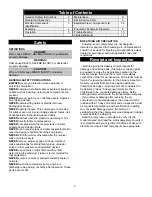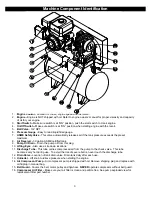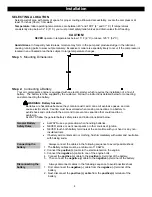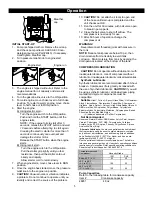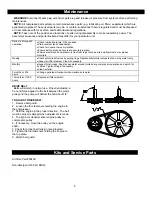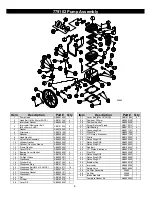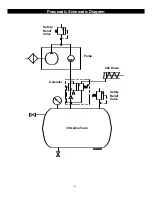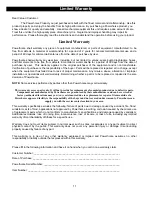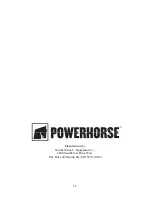
2
Table of Contents
Important Safety Instructions
2
Maintenance 6
Receipt and Inspection
2
Kits & Service Parts
6
Machine Component
Identification
3
Exploded View / Component List
7-8
Assembly 4
Pneumatic Schematic Diagrams
9
Operation 5
Troubleshooting 10
Limited Warranty
11
Safety
DEFINITIONS
DANGER!
WILL cause DEATH, SEVERE INJURY or substantial
property damage.
WARNING!
CAN cause DEATH, SEVERE INJURY or substantial
property damage.
CAUTION!
WILL or CAN cause MINOR INJURY or property
damage.
GENERAL SAFETY PRECAUTIONS
ALWAYS
wear eye protection when operating or
servicing compressor.
NEVER
operate where flammable or explosive liquids or
vapors such as gasoline, natural gas and solvents are
present.
NEVER
remove, paint over, or deface decals. Replace
any missing decals.
NEVER
operate with guards or shields removed,
damaged or broken.
NEVER
operate indoors. This compressor is intended
for outdoor use only. Avoid inhaling exhaust fumes, risk
of asphyxiation. Exhaust fumes are deadly.
NEVER
add fuel when the product is operating or hot.
NEVER
directly inhale compressed air.
NEVER
over-pressurize the receiver tank or similar
vessels beyond design limits.
NEVER
use a receiver tank or similar vessels that fail to
meet the design requirements of the compressor.
NEVER
drill into, weld or otherwise alter the receiver
tank or similar vessels.
NEVER
remove, adjust, bypass, change, modify or
make substitutions for safety/relief valves, unloader
valve or other pressure control related devices.
NEVER
use air tools or attachments without first
determining the maximum pressure recommended for
that equipment.
NEVER
point air nozzles or sprayers toward people or
animals.
NEVER
touch the compressor pump, engine or
discharge tubing during or shortly after operation. These
parts become hot.
BREATHING AIR PRECAUTION
Powerhorse air compressors are not designed,
intended or approved for breathing air. Compressed air
should not be used for breathing air applications unless
treated in accordance with all applicable codes and
regulations.
Receipt and Inspection
Before signing the delivery receipt, inspect for
damage and missing parts. If damage or missing parts
are apparent, make the appropriate notation on the
delivery receipt, then sign the receipt. Immediately
contact the carrier for an inspection. All material must be
held in the receiving location for the carrier’s inspection.
Delivery receipts that have been signed without a
notation of damage or missing parts are considered to
be delivered “clear.” Subsequent claims are then
considered to be concealed damage claims. Settle
damage claims directly with the transportation company.
If you discover damage after receiving the air
compressor (concealed damage), the carrier must be
notified within 15 days of receipt and an inspection must
be requested by telephone with confirmation in writing.
On concealed damage claims, the burden of
establishing that the compressor was damaged in transit
reverts back to the claimant.
Read the compressor nameplate to verify it is the
model ordered, and read the motor nameplate to verify it
is compatible with your electrical conditions. Make sure
electrical enclosures and components are appropriate.


